Dominican Republic
14 Interesting Islands of the Dominican Republic to Explore
Our delicious cultural cuisine, diverse landscapes, and the friendliness of our Dominican people are just a few of the many reasons why travelers visit the Dominican Republic. But on top of that? Our breathtaking coastlines full of gorgeous beaches and little islands make visitors want to come back for more tropical vacations. Of our many natural wonders, here are some of the most interesting islands of the Dominican Republic to visit on your next trip
Table of Contents
Read Our Other Dominican Republic Blog Posts
- Best Waterfalls in the Dominican Republic to Visit
- Everything You Need to Know Before Traveling to the Dominican Republic for the First Time
- Dominican Culture & Traditions to Know Before You Go
- Moving to the Dominican Republic? Here’s How to Be a Better Expat
- Understanding Blackness in the Dominican Republic
- Dominican Film: Best Dominican Movies to Watch
Islands of the Dominican Republic
With more than 800 miles of coastline, there are countless Dominican Republic beaches to choose from. On top of that, you can easily take boats to the little islands and keys for an even better and more secluded island experience.
The Dominican Republic is home to about 100 small islands around the country. Some islands are located within lakes (like Isla Iguana in Laguna de Oviedo) and others are on the Atlantic Ocean or the Caribbean Sea. Some of our islands have popular tours that easily take travelers there several times a day. Others might require a private tour and/or are in a protected area.
Therefore, we have divided the islands below by region and with important information on how to get there.
Northwest Dominican Republic Islands
Are you planning to visit one of the coastline towns located in the Northwest of the Dominican Republic? If your stay in the country is around Puerto Plata, Sosúa, Cabarete, or Montecristi, then you could conveniently visit one of these four beautiful islands of the Dominican Republic.
1) Cayo Arena (Paradise Island)

Cayo Arena – also known as Cayo Paraíso (Paradise Island by tourists) – is located off the northwestern shores of the Dominican Republic. Although it’s closer to the beautiful city of Montecristi, most of the tours depart from Punta Rucia in Puerto Plata.
Cayo Arena is the only coral island in the Dominican Republic. Its unique beauty (along with the coral reefs and the diverse marine life) makes this key island a paradise for snorkeling and diving enthusiasts. But don’t worry, if you are not a fan of these activities you can still enjoy this dreamy tiny sandbank and relax on the white sand or bathing in the crystal-clear turquoise water.
Cayo Arena Tours + How to Get to Cayo Arena
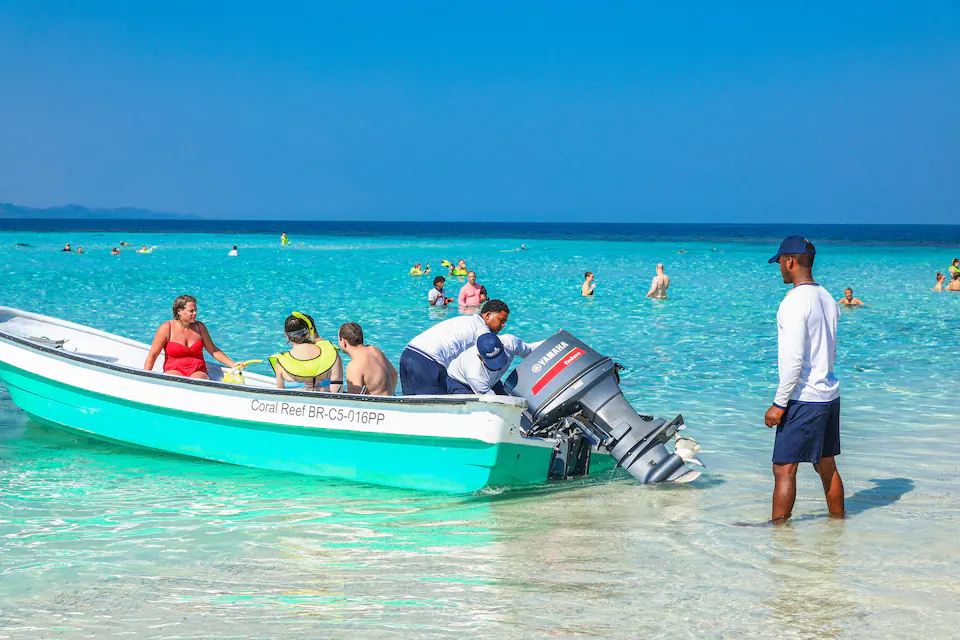


This speedboat tour from Punta Rucia takes around 25 minutes. Or you can go on this catamaran tour which takes a little longer but is a peaceful ride. Most of the trips include a visit to the mangroves, a stop in the naturally formed pools in the middle of the sea and fruits and drink on the island! Tour prices range from DOP 4,000 (USD 75) for a boat and up to $120 per person – it all depends on your travel preferences. The complete tour takes around 3-4 hours. There is also this kayaking experience which you can do from the nearby town of Villa Isabela.
Bear in mind that a trip to Cayo Arena is only suitable as a day trip since the island is tiny and there is no accommodation available. And don’t forget to reapply your sunscreen! The water is so clear that it reflects the sun with a stronger glare.
2) Cayo Siete Hermanos (7 keys)

The Cayo Siete Hermanos (7 keys) are located at the northwestern shores of Montecristi Bay. This group of seven uninhabited islands are composed of Terrero, Monte Grande, Muertos, Arenas, Tororu, Monte Chico, and – the major draw – Cayo Tuna. The virginal topography of these islands is what makes a visit here so special. It is a mix of the dry climate and desert plant life on a tropical Caribbean island.
Birds: Also, every year from May to August these islets become the nesting and mating centers for many migratory and native seabirds. Therefore, if you consider yourself a birdwatcher or have a special interest in watching migratory birds, this will be a paradise for you.
Other animals: Also, around the island’s shores, you’ll spot cacti, iguanas, and hawksbill turtles as these islets serve as habitat and natural refuge for these species.
Tours to Cayo 7 Hermanos & Isla Cabra
There are two local Dominican companies (yay) that you can hire for a tour of these islands. The rates all depend on how far you want to go and the number of travelers. The farther you go with fewer people, the more expensive the tour. Here are the two contacts to reach through Whatsapp:
- Galleon Divers (809)654-3924
- Soraya & Leonardo Tours (809)961-6343
- Carlos Tours (829)978-4844 (I haven’t talked to these guys. I think they’re new)
4) Isla Cabra ★
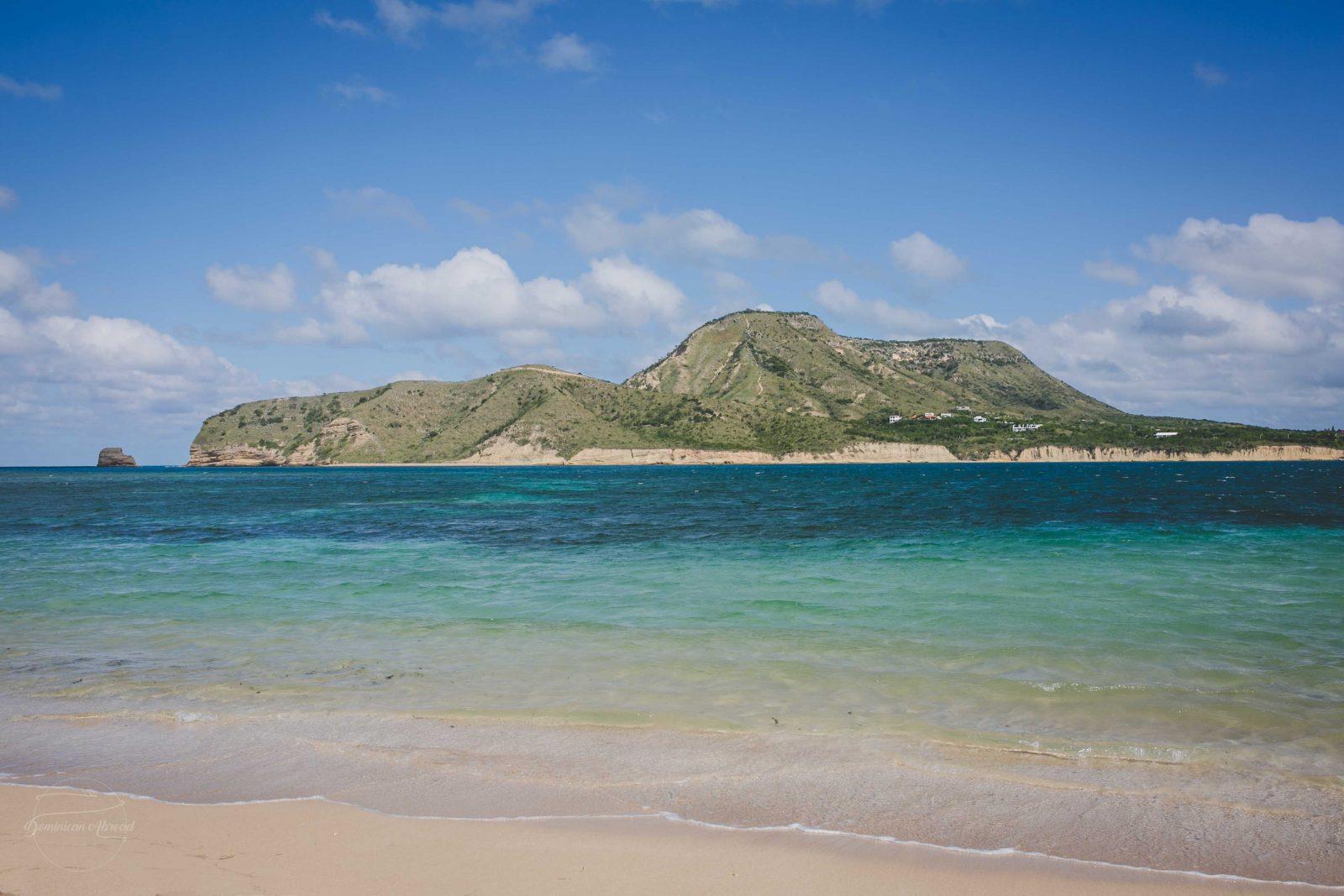
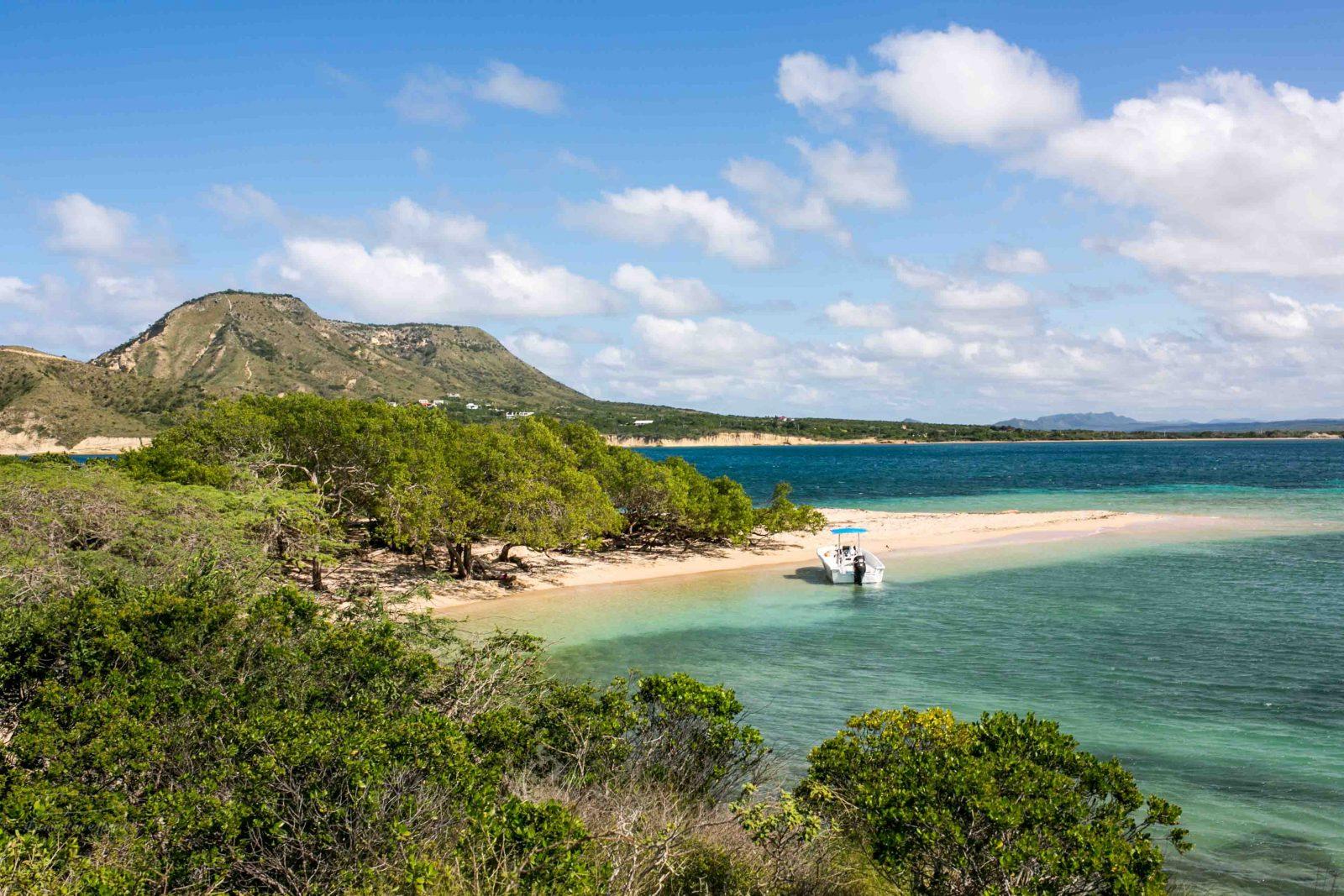
Isla Cabra is another of the islands located off the shores of Montecristi. This uninhabited island offers little hikes, naturally shaded areas for a picnic, and a beautiful emerald-green beach all to yourself.
This virginal and arid desert-like island has no building development – and that’s part of the beauty of it. If you fear heights, you might want to stay on the beach swimming. However, if you don’t mind a bit of altitude, you could go up to the top of the hill to appreciate the great views (pictured above) of the iconic Morro, the salt pans, and Montecristi Bay.
Luckily, from Montecristi town, you can arrange a whole day excursion to Montecristi coastline including both Isla Cabra and Cayo Siete Hermano along with the Montecristi’s mangroves and natural pools. See the tour guides listed above.
Alternatively, there are some indepedent tours departing from Santo Domingo that visit the Montecristi Province over a weekend and provide experiences such as camping in Isla Cabra under the light of the stars. But these run sporadically.
Southwest Dominican Republic Islands
As you all know, the southwest Dominican Republic is Gerry (our editor)’s favorite! So of course, we had to add the islands in this spectacular region. While in the southwest Dominican Republic don’t forget to visit Bahia de las Aguilas beach, Laguna de Oviedo, and some of the best Dominican food on the island! From here, you can also easily hop into Haiti for a couple of days.
Fun fact: All three islands listed below + Bahia de las Aguilas beach are a part of Jaragua National Park, making this one of the largest protected areas in the Caribbean.
5) Isla Iguana
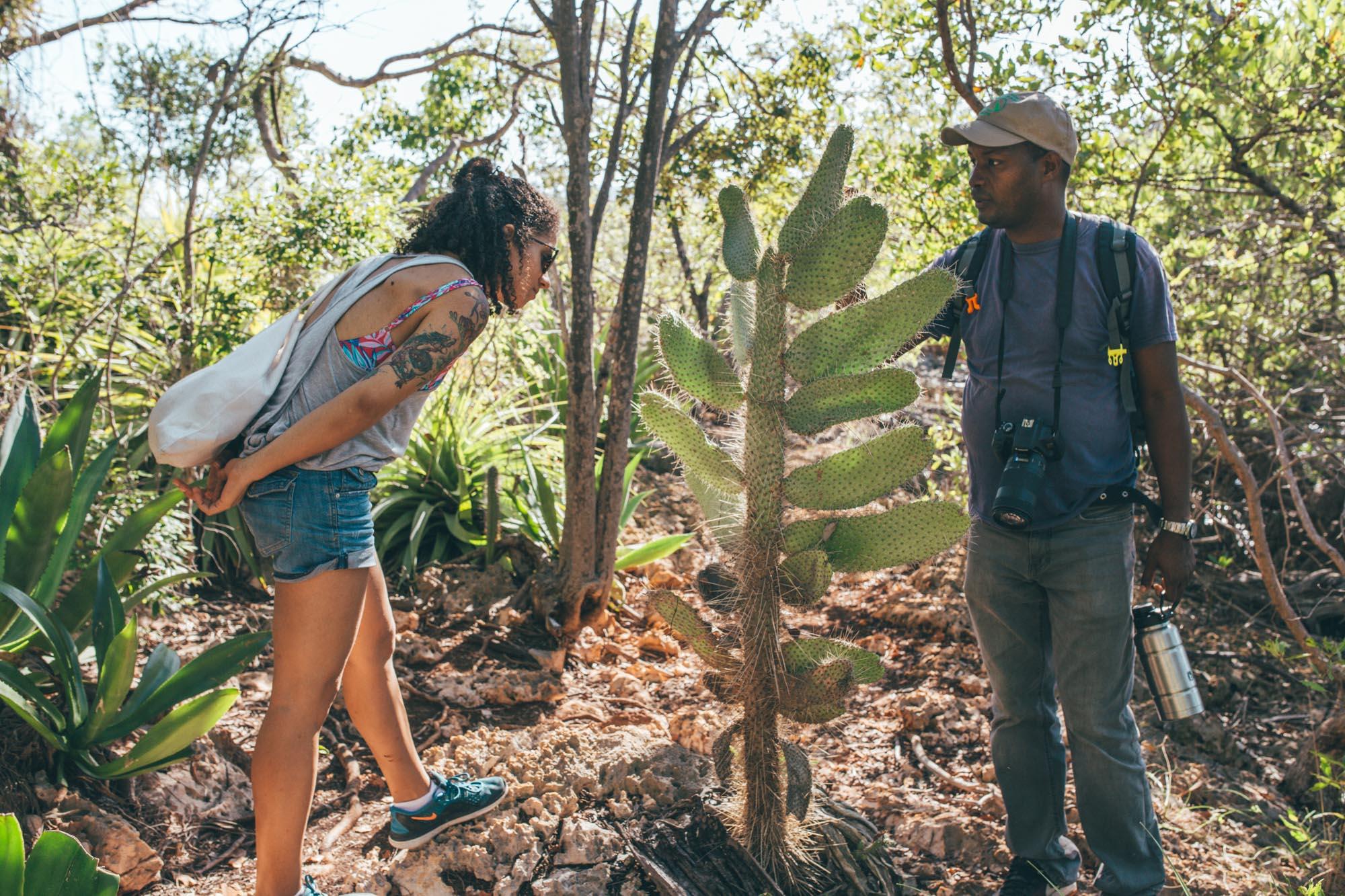

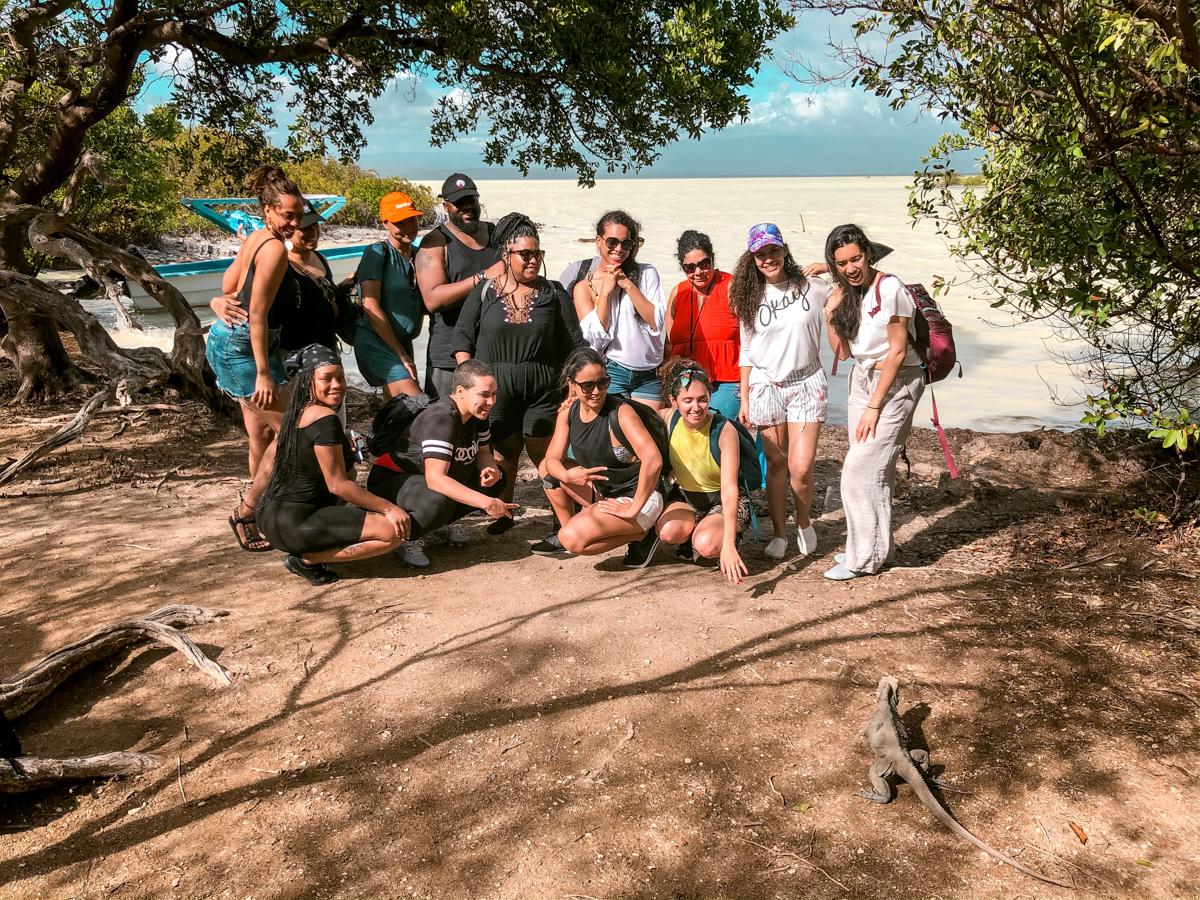
Located in the Southwest Dominican Republic, 5 hours from Santo Domingo by car, is the uniquely hypersaline lake: Laguna de Oviedo in the Jaragua National Park. Laguna de Oveido is the second-largest lake in the country. And within this lake? There are several little islands! The only island that you can visit and step foot on is: Isla Iguana (Iguana Island).
For the protection of the ecosystem, this is the only island you can disembark on in Laguna de Oviedo. Here you will find an uninhabited island made of coral rock formation where several iguanas live. These iguanas will come out to greet you upon hearing you arrive. This is likely because they have been trained to think of humans as bearers of food now.
6) Isla Beata

Isla Beata is a small island just off the coast of the world-renowned Bahia de las Aguilas beach. People usually don’t travel here because you usually have to pay for a private tour to take you through the ocean waters to get there. The only people you might find here are some fishermen and a Dominican military base with some rotating personnel.
On Isla Beata, you can find mangroves, birdlife, beaches, and some interesting rocky surfaces. It’s also home to sinkholes and open caves (cenotes). Just like Isla Iguana, it’s also home to rhinoceros iguanas.
7) Alto Velo Island

Alto Velo is another tiny uninhabited island in the Dominican Republic. This one is just 7ish miles southwest of Beata Island (listed above). Alto Velo was named by the notorious colonizer Christoper Columbus, because from a distance the island looked liked a tall ship sail (alto velo = tall sail).
In the 1860s, at least three American companies tried to claim the island under the Guano Islands Act. One of these companies even tried to sue the Dominican Republic for ownership of Alto Velo until the Dominican Republic gave mining rights to one of their competitors: Webster who mined 10,000 tons of guano). This scared away a lot of the birds and seals from the island. Then another French company was given mining rights to mine another 10,000 tons. Sheesh.
Basically, this island has a really weird and interesting history with bird poop. Check out this video in English or this video in Spanish to learn more about American bird poop imperialism of Alto Velo.
>> Read: This 1856 law makes it legal to seize islands for the USA if they have lots of bird poop (The Guando Islands Act). This law is why Navassa Island which belongs to Haiti is being claimed by the United States.
Northeast Dominican Republic Islands
The northeast coast of the Dominican Republic is rich in colorful towns, delicious seafood, and plenty of outdoor activities to do. This coastline of the country is full of breathtaking landscapes and some of the most beautiful waterfalls in the Domincan Republic. If you’re basing your Dominican Republic vacation here, then consider a visit to one of the below islands.
8) Cayo Levantado

Cayo Levantado is a small picturesque island that sits just 5 kilometers (three miles) from Samaná Bay. This beautiful island is also known as Bacardi Island due to a commercial filmed on the island in the ’70s by the famous Bacardi rum brand.
Here, you can spend the day swimming, sunbathing, kayaking, or paddleboarding. Then, make sure to enjoy the fresh and delicious seafood. Don’t forget your snorkels to take look at the marine life just below the water’s surface.
How to Get to Cayo Levantado
You can take a day trip to Cayo Levantado from the town of Samaná. Boat “taxis” depart regularly from there bringing visitors daily to this small island – the boat ride goes from DOP 500 (USD 10) and ranges depending on the route (there are many other experiences you can add to the route).
If you are visiting this island between January and March, you might be able to combine your visit of Cayo Levantado with a whale-watching experience. Please note – The Humpback Whale migration along with the steady stream of cruiseship passengers can make this island very crowded in the high season. So if you prefer a bit more privacy and luxury you can also spend the night at one of the on-site hotels like this one.
9) Cayo de los Pájaros

Cayo de los Pájaros (Bird’s Island) is one of the islands in Los Haitises National Park – a popular area for ecotourism. This island will make you think you’re in Koh Phi Phi or Krabi in Thailand. That’s because the Dominican Republic is like a minicontinent, in that it truly does have it all!
As its name suggests, Cayo de los Pájaros is home to many bird species. It is home to two important endemic birds that make up the biggest population of living species on the island: the brown pelicans and the frigatebirds. The diversity of bird species makes Cayo de los Pájaros a must-see place for birdwatchers and nature lovers. Make sure to bring your binoculars!
If you are planning a visit to Cayo Levantado (mentioned above) we recommend asking your tour guide in Samaná to include a stop at Cayo de los Pájaros to enjoy the spectacular views and thriving birdlife. On a tour to Cayo de los Pajaros, you’ll also be cruising through the beautiful mangrove forests via the park’s canals.
10) Silver Bank (Submerged Bank)

The Silver Bank is located approximately 80 miles from the northeastern shores of the Dominican Republic. This bank is protected by NOAA as the “Sanctuary for the Marine Mammals of the Dominican Republic“. This area is one of the largest mating & calving grounds for Humpback whales.
But this is not your average whale-watching tour! The Silver Bank where travelers from around the world come to go diving and swimming with the humpback whales. These expeditions are only provided by specialists approved by the Dominican government who can provide a safe experience.
You can book a tour to Silver Bank and Navidad Bank through this website and maybe others. The prices start at $4,000 dollars. Whoa, brother! So start saving now.
11) Navidad Bank (Submerged bank)

Navidad Bank is close to Silver Bank and is also an area in the Atlantic Ocean located to the north of the Dominican Republic. The Navidad Bank is a shallow underwater area composed of coral and sand that almost reaches the ocean’s surface but is wholly submerged.
The Navidad Bank is another safe haven for marine mammals, including the humpback whales that have long used this bank as a breeding and calving ground. Like the Silver Bank (mentioned above), tourism in Navidad Bank focuses on tours for scuba divers to meet the whales and other sea life. This location is also protected by NOAA.
Southeast Islands of the Dominican Republic
The Dominican southeastern coast is one of the most beautiful areas of the country where you can find plenty of white sand beaches bordered by the Caribbean sea. This region of the country is well-known for its all-inclusive resorts and hospitality services. So, if you have decided to fly to Punta Cana or La Romana Airport, you might be interested in visiting the below islands:
12) Saona Island

Saona Island is a part of the National Park of the East nature preserve protected by the Dominican government. This small island is just off the coast of La Altagracia province is easily accessible from the capital city of Santo Domingo, Punta Cana resorts, and Bayahibe. As the southeastern edge of our country attracts the most tourists, Saona island is one the most visited islands in the Dominican Republic.
Please do not touch or pick up starfish when you visit the natural pools nearby the island. They are currently endangered on this beach. Please be mindful of your environmental impact on this protected area. Remember to wear eco-safe sunscreen like this one.
Tours to Saona Island

A visit to this island is often via party-style catamarans on the way there and via speedboats on the way back. So if you’re looking for something quiet, this is probably not the beach trip for you. However, if you want to enjoy the most beautiful crystal-clear waters, add the Saona Island to your bucket list. Make sure you bring your goggles and a snorkel for the beautiful reef, starfish, and more!
Here is a tour you can book to visit Isla Saona. It’s got excellent reviews. However, if you want to save money, you can probably get something cheaper in person in Santo Domingo but remember that you get what you pay for!
13) Catalina Island
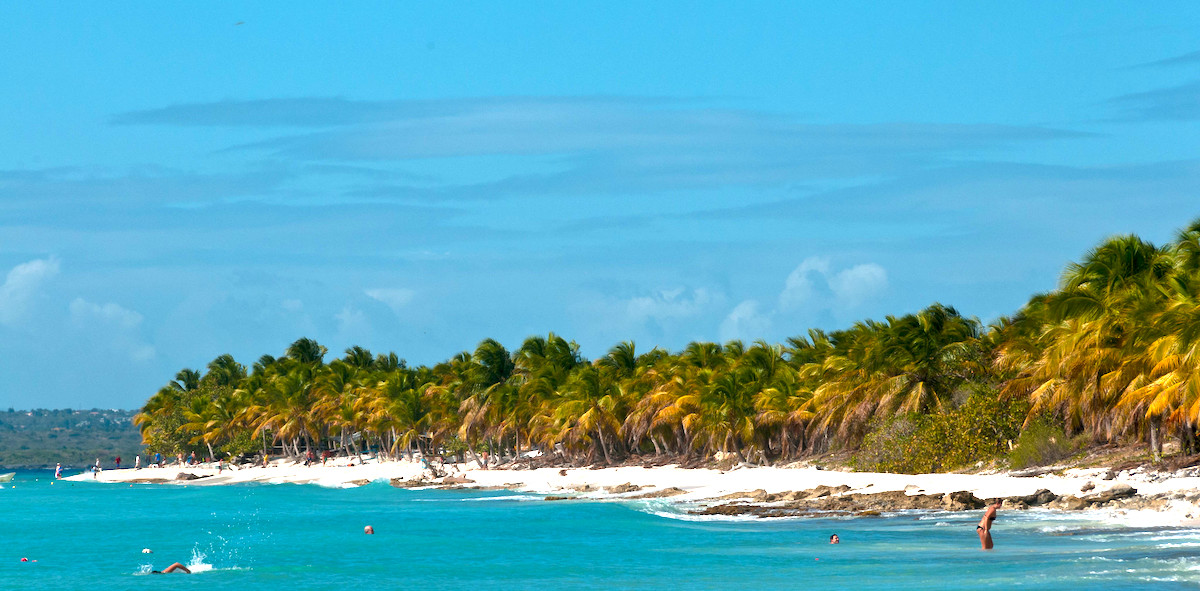
Catalina Island is the nearest island to La Romana, located just 1.5 miles from our mainland. This small island is an occasional destination for cruise ships on Caribbean routes. So if you hate big boats blocking your views, reconsider this island option. However, this island is known as one of the best places for diving in the Dominican Republic. With its powder-fine white sand, calm waters, and lack of commercial development, Catalina Island is a stunner for all its visitors.
Popular dive sites include the 100-feet Catalina Wall and the Aquarium. Catalina’s waters are abundant in coral reefs, including a rare geological formation of over 100-feet known as “the Wall” and a “Living Museum of the Sea” which is a shipwreck at 70 feet (21 meters) deep.
14) Catalinita Island

Next to the Saona Island (mentioned above) is Catalinita Island. This small island sits in the Catuano Channel, popular for its crystal-clear waters year-round, and its abundance of marine life and coral reefs. Given its geographical location at the confluence between the Caribbean Sea and the Atlantic Ocean, the shallow waters of Catalinita are home to eagle rays, sharks, and sea turtles.
If you are visiting Saona Island from Punta Cana or Bayahibe, you can request your tour provider to combine both trips and make it a diving excursion.
About the Author: Thais Reyes
Thais was born and raised in the Dominican Republic. She is passionate about traveling not just the Dominican Republic but internationall around the world! Her love for different cultures has lead her to study International Business in the UK. This degree has given her the opportunity to live in various parts of the world while appreciating cultural diversity.


